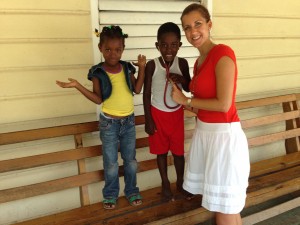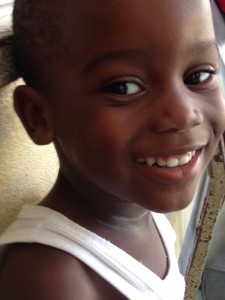Hello to everyone reading about our time with the Issa Trust Foundation. Tiffany and I are so excited to be apart of this. The people and culture of Jamaica have been incredible. We are falling in love with them! Tiffany is going to write more about the culture tomorrow. I’m going to outline a few of the patient encounters we have had thus far:
Last week was our first week in the hospitals. We spend every Monday and Tuesday and Port Maria Hospital, which is a level C hospital (meaning they only have the most basic supplies available, and basic medical care without specialty services). These are the most rural of hospitals. We split ourselves between the health clinic and the ER (known as the Accident & Emergency Department here).
The very first patient I saw in the A&E was a young 16 y/o with Type I Diabetes Mellitus – she looked like she was nine years old- evidence of very poor nutrition and very poor diabetic control. She came in with a fever of 102 and was tachycardic to the 140s (normal should be ~60 for her size)… she had an incredibly distended abdomen and was complaining of butt pain. When I went to do a rectal exam she had stool just leaking out of her underwear- she was so impacted from constipation that she was having what we call “encoparesis”, meaning stool leaking around an impacted stool ball. But Diabetics also have the potential to get real sick real fast with a syndrome known as Diabetic Ketoacidosis. Her fever made me concerned that her constipation had led to colitis (inflammation of the colon) and that bacteria were now getting into her bloodstream. I know exactly what I would do for this girl in the States: IV fluids, IV antibiotics, lots of labs, and probably a CT scan of her abdomen. But there is no CT scanner here and the only x-ray machine is down for “servicing”. To get labs I have to draw my own, and I haven’t figured out how to get the nurses to do what I want them to do yet. Moreover, a lot of medications just aren’t available here and even if they are, many families can’t afford them. Will I be able to treat this patient appropriately? What if I miss something?
The following day, I saw a 2 y/o boy who was falling off his growth curve, was not putting words together yet like he should at this age, and had just been hospitalized with a fracture of his left leg. I’m afraid that he has Rickets, an uncommon disease in the United States nowadays, but previously very common and still present in many developing countries. It is usually due to a deficiency of Vitamin D and this causes your bones to not form as they should. If can also affect cognitive development. Unfortunately a lot of the damage is irreversible. I gave mom a prescription for high doses of Vitamin D and referred her to the only Children’s Hospital in the country of Jamaica. Will she get there? What will they be able to offer this family?
Something that I have been very struck by here in Jamaica is the number of broken families I have met. Almost every child I have treated does not have a father that lives at home. Most mothers are single moms and have several children from several different men. One doctor told me that 4 out of 5 families will have single moms. This leads to generation after generation of boys and girls being raised without father-figures. Another huge social factor is the high rate of homicide. I do not know the statistics, but in my first two days of clinic I met 4 children who had fathers or mothers that were murdered. The lack of fathers and “home units” certainly contributes to the mental, emotional, and hence physical health of these poor children. It breaks my heart actually. How can I help?
I will leave you for tonight, but look forward to writing more later!
Katie & Tiffany




Connect With Us